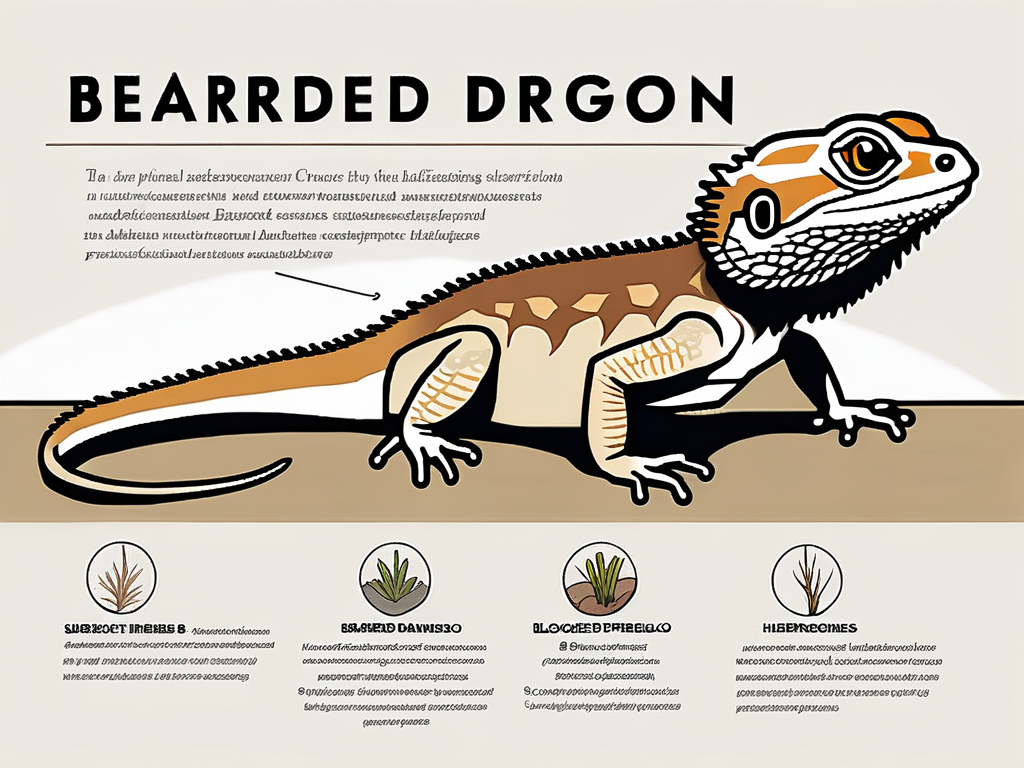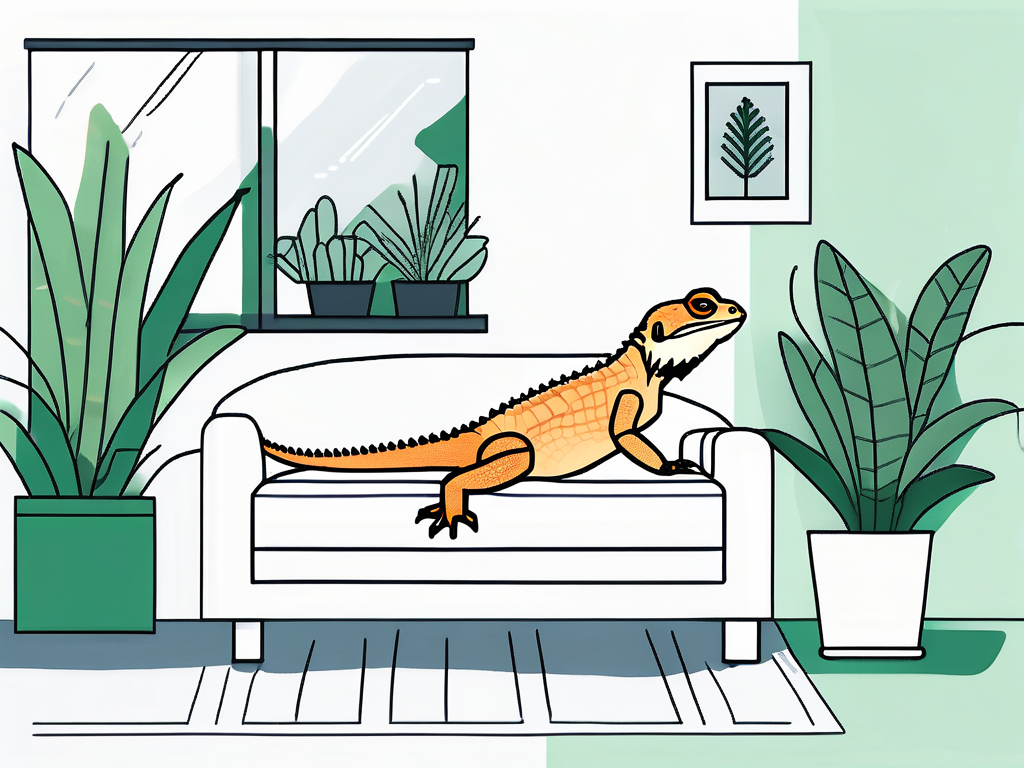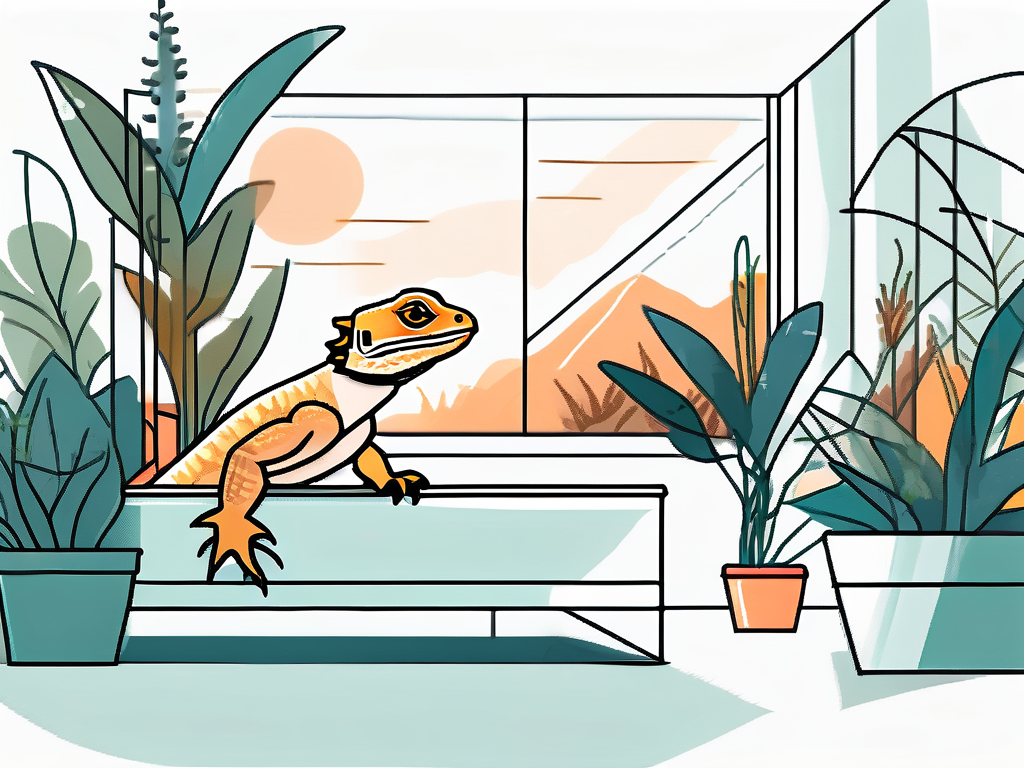If you’re considering keeping a bearded dragon as a pet, it’s essential to understand the potential impact it may have on your health, especially if you plan to keep the tank near your bed. In this article, we’ll explore the key aspects of bearded dragon care and safety to help you make an informed decision. Let’s begin by establishing some basic facts about these fascinating creatures.
Understanding Bearded Dragons: Basic Facts
Bearded dragons, scientifically known as Pogona vitticeps, are native to the arid regions of Australia. These reptiles have become increasingly popular as pets due to their manageable size, docile nature, and unique appearance.

Bearded dragons are diurnal and thermoregulate their body temperature by basking in sunlight. They have a lifespan of around 10-12 years, and with proper care, they can become wonderful companions.
Bearded Dragon Behavior and Habits
Bearded dragons are known for their calm demeanor and sociable nature. They may display specific behaviors such as head bobbing, arm waving, or even puffing up their throat to show dominance or attract a mate. Understanding these behaviors can help you provide appropriate care and create a suitable environment.
Did you know that bearded dragons are also skilled climbers? In their natural habitat, they often perch on tree branches or rocks to bask in the sun and survey their surroundings. Providing them with climbing structures in their enclosure can mimic this natural behavior and enhance their overall well-being.
These reptiles also have specific habitat requirements to remain healthy and happy. Let’s delve into some aspects of bearded dragon health and hygiene.
Bearded Dragon Health and Hygiene
Ensuring the health and hygiene of your bearded dragon is paramount for both their well-being and yours. Regular veterinary check-ups, a balanced diet, and a clean enclosure are crucial for maintaining their optimal health.
Did you know that bearded dragons shed their skin as they grow? This process, known as molting, allows them to replace old, worn-out skin with new, fresh skin. It’s important to provide a humid hide in their enclosure during the shedding process to facilitate a smooth molt and prevent any complications.
Additionally, good hygiene practices, such as washing your hands before and after handling your pet or cleaning the tank, can minimize the risk of bacterial contamination and the potential for transmission of zoonotic diseases.
Remember, taking care of a bearded dragon involves more than just providing food and water. Understanding their behavior, meeting their habitat requirements, and maintaining their health and hygiene are all essential aspects of responsible pet ownership.
The Impact of a Bearded Dragon’s Environment on Human Health
Now, let’s delve deeper into the fascinating relationship between a bearded dragon’s habitat and its potential effects on human health. Understanding this dynamic interplay is essential for responsible pet ownership and maintaining a healthy living environment.

Bearded dragons, known for their docile nature and unique appearance, require specific environmental conditions to thrive. These conditions, while suitable for the reptile, can sometimes introduce challenges for human health, especially when the tank is located in shared living spaces like bedrooms.
Potential Risks of Keeping a Bearded Dragon Tank in Your Bedroom
Close proximity to a bearded dragon tank may pose certain health risks, particularly if you have a compromised immune system or respiratory issues. Some potential concerns include allergies triggered by reptile dander, tissue infections from scratches or bites, and the transmission of zoonotic diseases such as salmonellosis, which can be passed from reptiles to humans.
Understanding these risks is crucial for determining the most suitable location for your bearded dragon tank. While the allure of having your scaly companion close by is understandable, it’s vital to weigh the potential health implications for yourself and others sharing the space.
Measures to Minimize Health Risks
While the potential risks exist, you can take several precautionary measures to mitigate them and create a harmonious cohabitation environment.
- Designate a well-ventilated area for the tank to reduce the concentration of allergens and potential contaminants in the air. Adequate airflow can help disperse any irritants and maintain air quality.
- Strictly adhere to hygienic practices by regularly cleaning the tank, using appropriate disinfectants, and washing your hands thoroughly before and after handling your pet. This routine maintenance not only benefits your health but also promotes the well-being of your bearded dragon.
- Avoid direct contact between the bearded dragon and your face or any open wounds to minimize the risk of bacterial infections. While interactions with your pet are essential for bonding, being mindful of potential health hazards is equally important.
The Ideal Location for a Bearded Dragon Tank
Choosing the right location for your bearded dragon tank is vital to ensure both their health and yours. Let’s consider some key factors when deciding where to place the tank.

Bearded dragons, known for their unique basking habits, thrive in environments that mimic their natural habitat. When selecting the perfect spot for your bearded dragon tank, it’s crucial to consider not only the physical aspects but also the ambiance of the surroundings.
Factors to Consider When Choosing a Location
Several factors influence the ideal location for a bearded dragon tank:
- Temperature stability: Ensure the tank is not exposed to extreme temperature fluctuations or drafts. Bearded dragons require a basking spot with temperatures ranging from 95-110°F to regulate their body temperature effectively.
- Lighting: Bearded dragons require access to appropriate levels of UVB light for proper calcium metabolism and overall health. Placing the tank near a window or providing artificial UVB lighting is essential for their well-being.
- Noise and disturbance: Select a location with minimal noise and disturbance to help promote a stress-free environment. Bearded dragons are sensitive to loud noises and sudden movements, so a quiet corner of your home would be ideal.
Additionally, consider the humidity levels in the chosen location. Bearded dragons thrive in environments with low humidity levels, so avoid placing the tank in areas prone to moisture buildup, such as bathrooms or kitchens.
Tips for Safe and Healthy Co-habitation
While it’s important to take precautions in setting up the tank, it’s also essential to establish healthy co-habitation habits:
- Regularly clean and disinfect the enclosure to maintain a hygienic environment for your bearded dragon. A clean tank helps prevent the growth of harmful bacteria and ensures your pet’s well-being.
- Provide a nutritious and varied diet to meet their nutritional needs. Bearded dragons are omnivores and require a mix of insects, vegetables, and fruits to maintain a balanced diet.
- Handle your bearded dragon gently and avoid unnecessary stressors. Regular handling helps build trust between you and your pet, creating a bond that enhances their overall quality of life.
Frequently Asked Questions About Bearded Dragons and Human Health
Now, let’s address some common misconceptions and provide expert advice on bearded dragon care and safety.
Common Misconceptions and Facts
Dispelling misconceptions is essential for ensuring the well-being of both bearded dragons and their owners. Let’s address some common concerns:
- Bearded dragons do not directly cause allergies; however, proteins found in their skin and shed scales may trigger allergic reactions in susceptible individuals.
- Contracting salmonellosis from a bearded dragon is rare. Practicing good hygiene and taking appropriate precautions significantly reduces the risk.
Expert Advice on Bearded Dragon Care and Safety
Consulting experts in bearded dragon care and safety is instrumental in providing the best possible care for your pet. They can help address specific concerns and provide guidance on various aspects of bearded dragon ownership.
When it comes to bearded dragon care, it’s important to consider their diet. These fascinating creatures are omnivores, meaning they require a balanced mix of insects and vegetables. Providing a varied diet ensures they receive all the necessary nutrients for optimal health. Popular insect choices include crickets, mealworms, and dubia roaches, while leafy greens like collard greens, kale, and dandelion greens are great vegetable options.
Creating a suitable habitat for your bearded dragon is also crucial. These reptiles thrive in environments that mimic their natural habitat. A spacious tank with proper lighting, heating, and humidity levels is essential. Additionally, providing hiding spots and climbing structures allows them to engage in natural behaviors and promotes their overall well-being.
In conclusion, keeping a bearded dragon tank near your bed can potentially pose health risks; however, with proper precautions and responsible care, these risks can be minimized. Understanding the behavior, habitat requirements, and health considerations associated with bearded dragons is essential for both their welfare and your own. By following these guidelines and seeking expert advice, you can enjoy a safe and rewarding experience with your bearded dragon as your fascinating companion.
